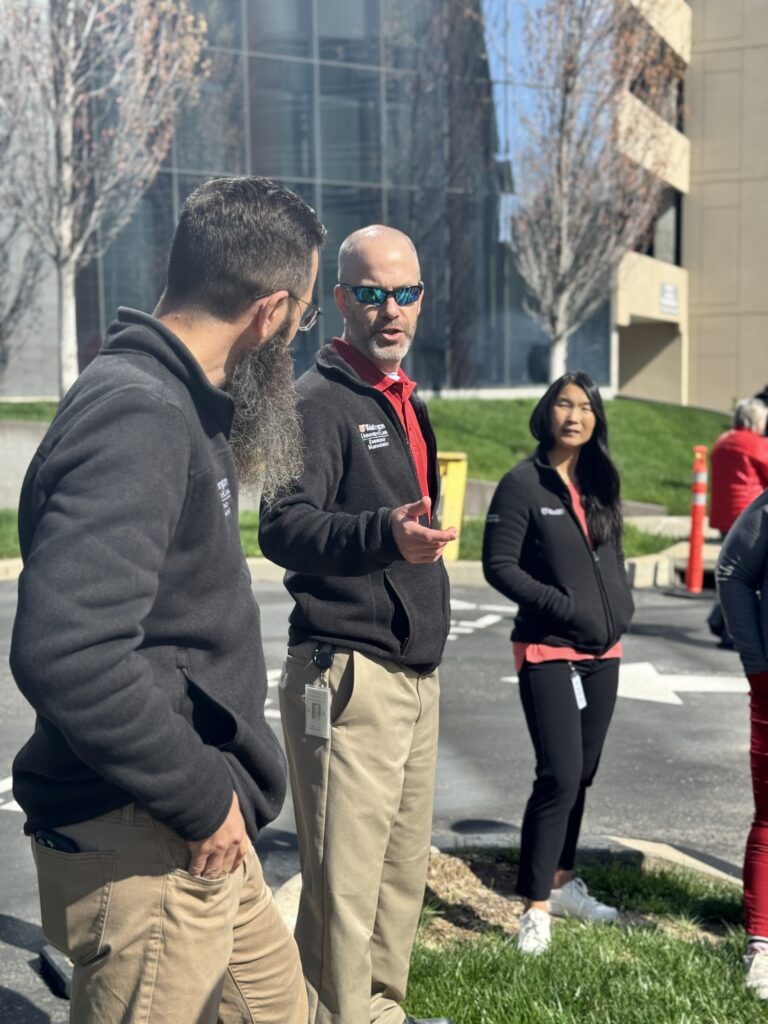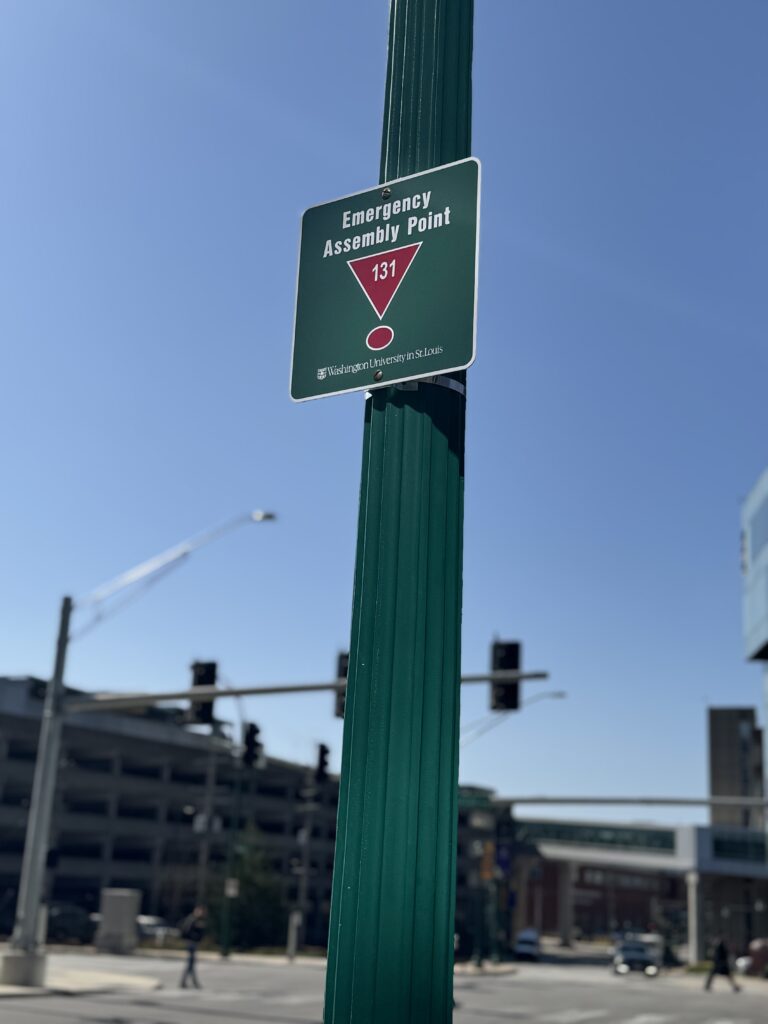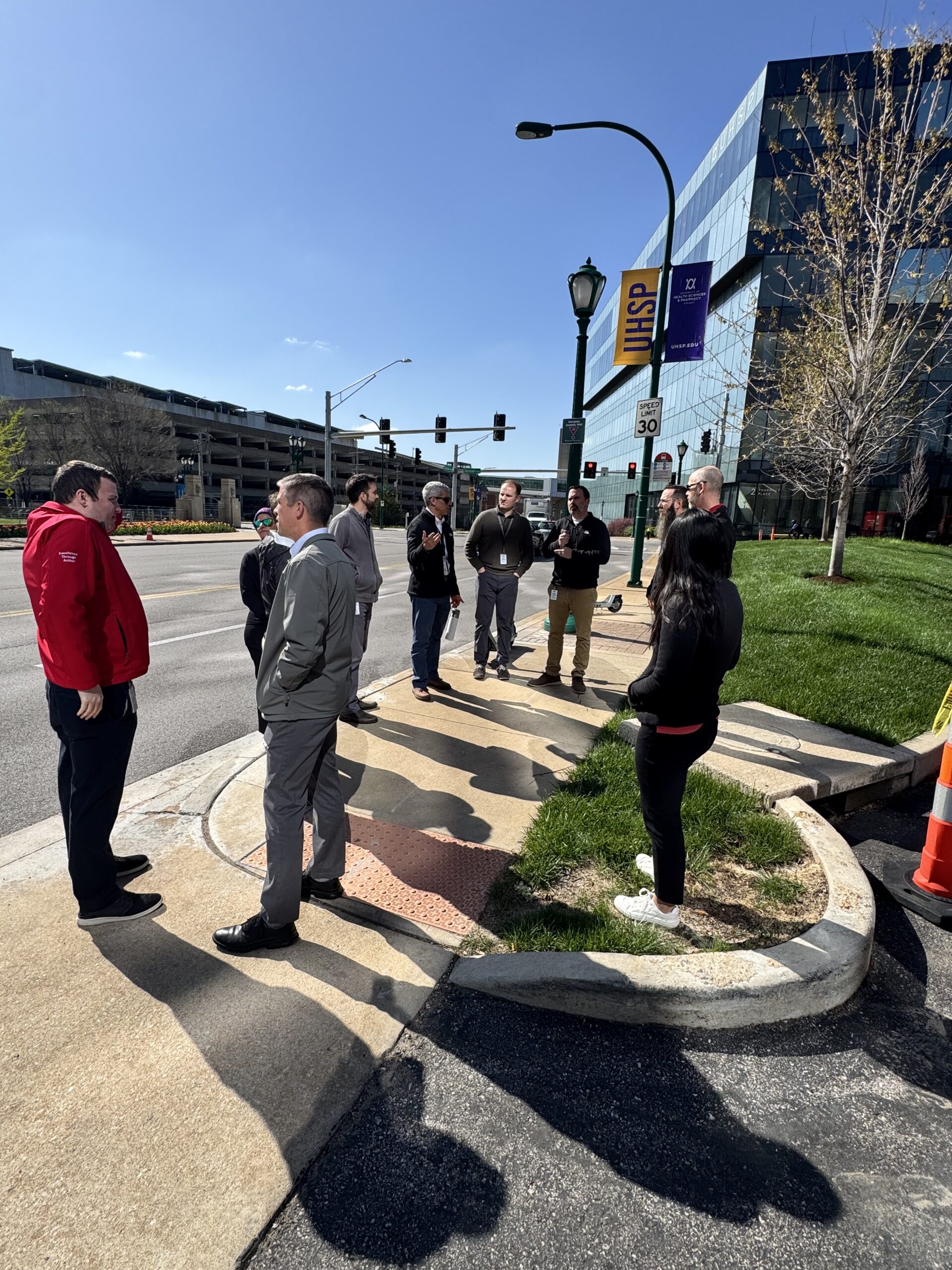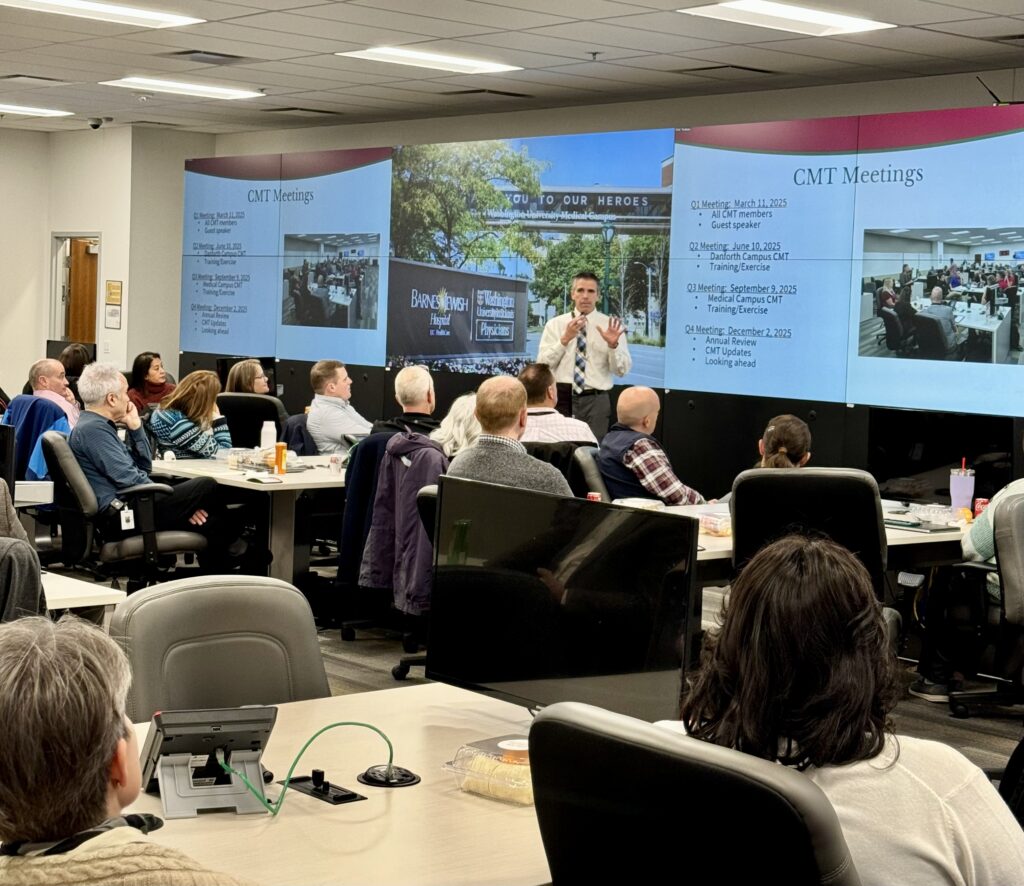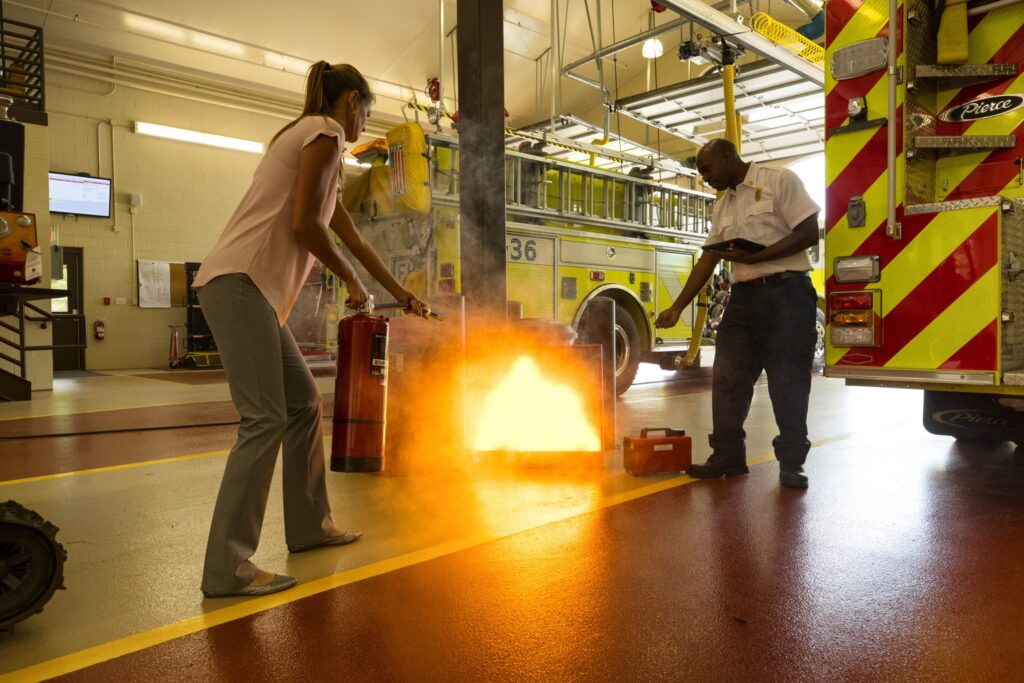Emergency Preparedness Coordinators (EPCs)
The Emergency Preparedness Coordinator (EPC) program is a university-wide initiative, designed to help each department or school prepare to respond to emergencies on campus. Department managers should designate an EPC who will attend trainings on how to assist with immediate response actions during an emergency.
Initial Emergency Preparedness Coordinator (EPC) Training – 1st and 2nd Quarters
| Medical Campus | July 29, 2025 | 10 am | Emergency Operations Center on the first floor of Mid Campus Center. |
| Danforth Campus | August 20, 2025 | 9 am | Danforth University Center (DUC) Room 276 |
As a friendly reminder, you only need to register for one session, as each training is identical and offered at two different locations (Med Campus and Danforth) each quarter. Please go here to register for the course. Enrollment is mandatory due to limited seating. If you have any questions, please do not hesitate to email Senior Program Manager Michael Vacca vacca@wustl.edu.
KMC responsibilities
- Receive emergency notifications if an emergency occurs in your building that may impact operations (e.g. power outage, flooding).
- Share emergency information with applicable faculty, staff and students.
Fire Safety and Fire Extinguisher Training
Some key takeaways from fire safety training are:
- Gaining life-saving knowledge. Fire safety training provides critical knowledge to prevent and responded to fire emergencies. Educating a wide audience equips individuals with the skills needed to act swiftly and effectively, reducing injuries and saving lives.
- Empowering individuals. By conducting fire safety and extinguisher training, I am hopefully empowering people to take control during an emergency.
- Reducing property damage. Early and proper response to a fire can minimize property loss and save significant resources.
- Building community preparedness. Trainings such as this strengthens community resilience. Trained individuals are better prepared to protect themselves, their families, and their workplaces, enhancing overall safety.
- Accessible training for all. My goal is to maximize outreach by ensuring the fire safety education reaches as many people as possible, including those who may not have had access to such training. Offering hands-on extinguisher training, on-site at people’s workspaces, can bridge knowledge gaps and increase engagement.
Fire Extinguisher Training:
| Medical Campus | June 24, 2025 | 9 am | Located at the Emergency Operations Center, room 1400, first floor of the Mid Campus Center. |
| Medical Campus | July 8, 2025 | 10 am | Located at the Emergency Operations Center, room 1400, first floor of the Mid Campus Center. |
Please go here to register for the course. Enrollment is mandatory due to limited seating. If you have any questions, please do not hesitate to email Senior Program Manager Michael Vacca vacca@wustl.edu.
AED Program
Sudden cardiac arrest is one of the leading causes of death in the United States. In the event of a cardiac arrest, an automated external defibrillator (AED) can deliver a lifesaving electric shock to the heart to try to restore a normal rhythm. There are more than 400 AEDs located across WashU’s campuses.
Bleeding Control Program
The WashU Bleeding Control Program helps the community and its first responders prepare for and respond to mass casualty events. Medical oversight is provided by Dr. David Tan, Associate Professor, Emergency Medicine and Emergency Medical Services Section Chief.
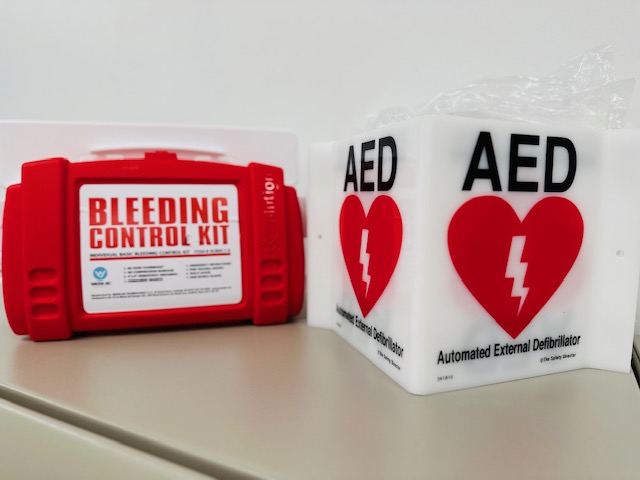
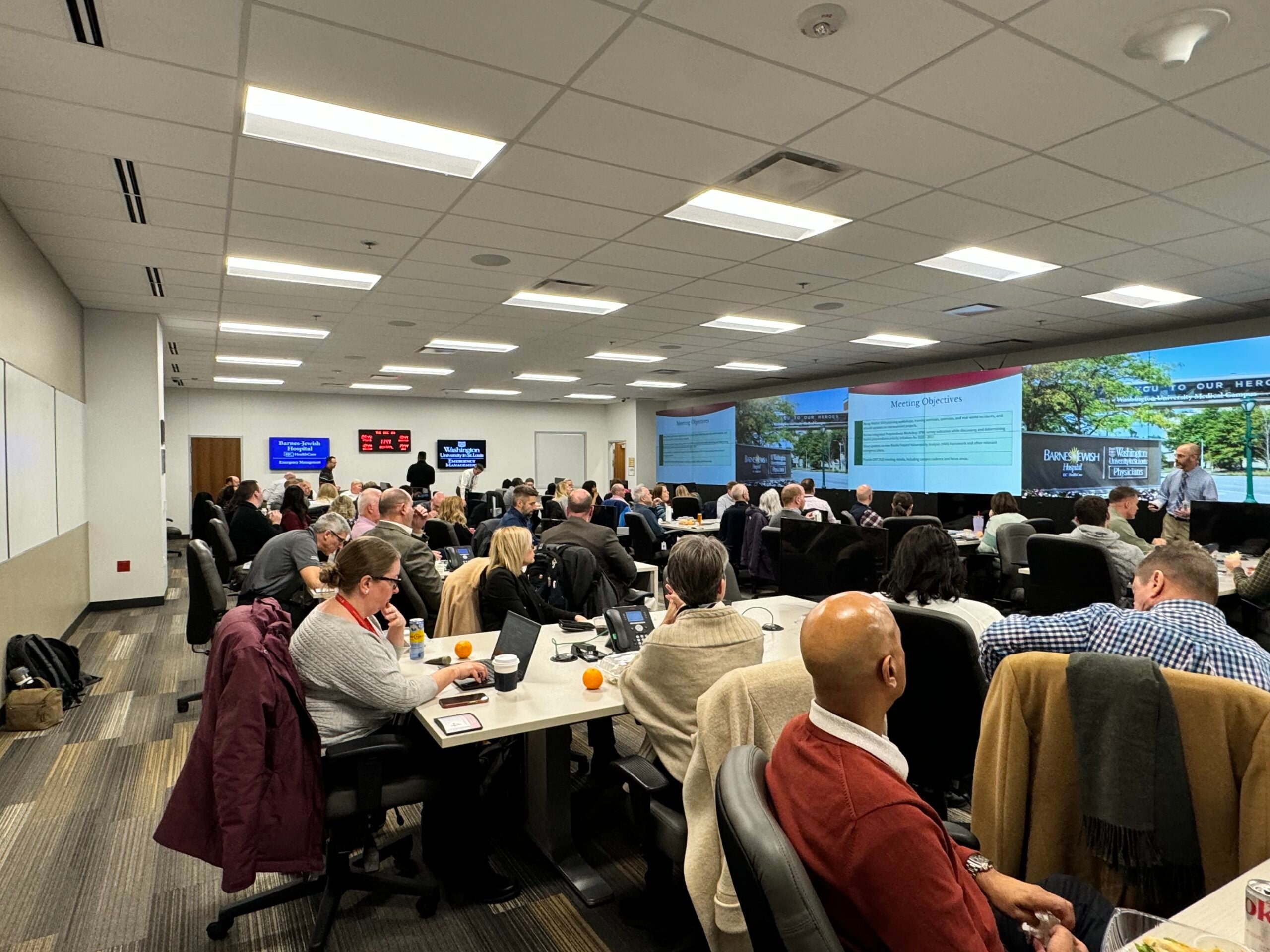
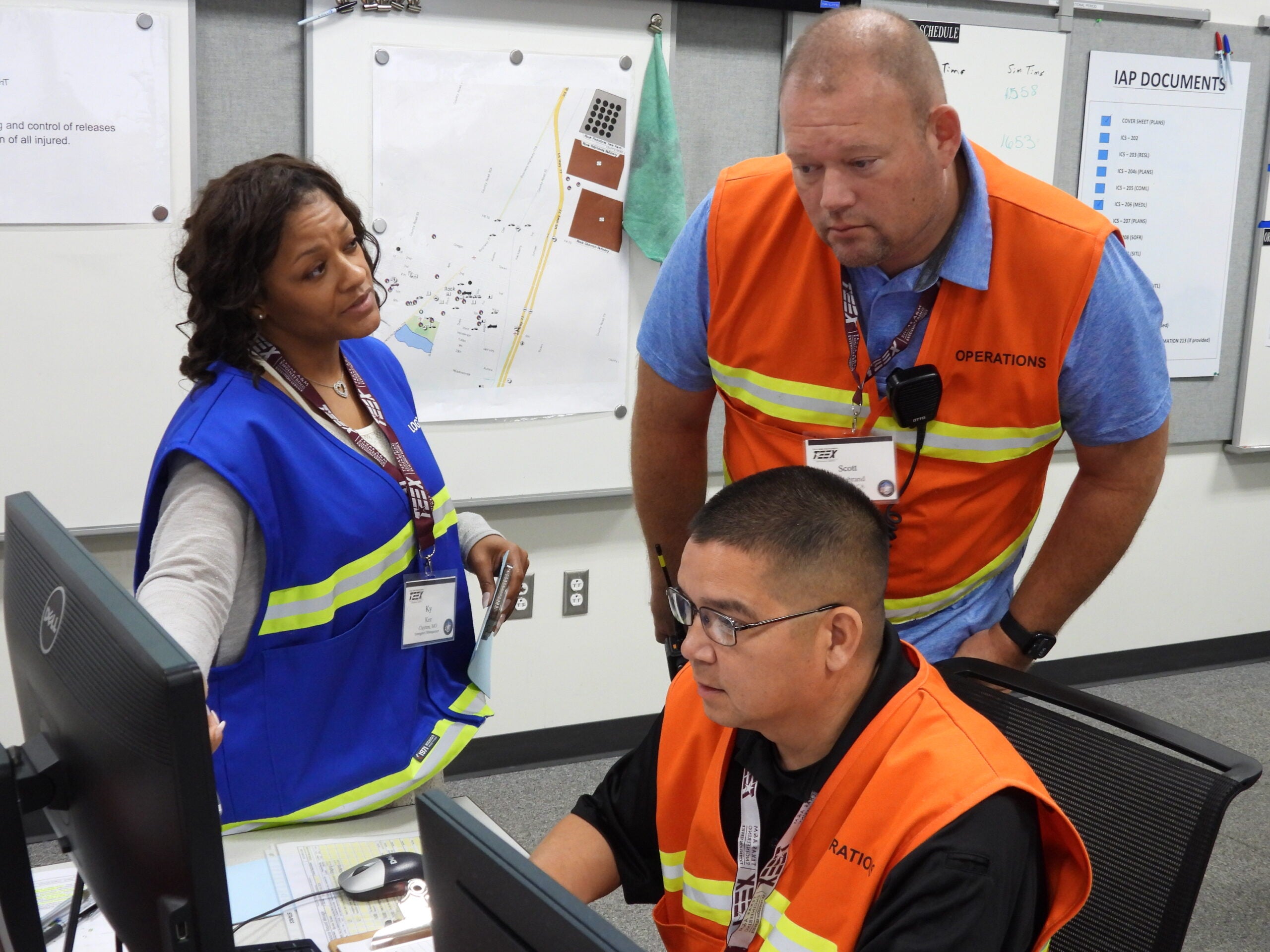
Crisis Management Team
The university’s lead coordinating body during major emergencies is the Crisis Management Team (CMT). The CMT is responsible for operational control and management of an incident, coordinating response operations primarily in the EOC. The CMT consists of the CMT Core Team, Emergency Support Function staff and the Incident Management Team.
CMT Resources
Veoci CMT Page
Veoci WashU EOP Review Form
Emergency Operations Center
During large planned events and emergencies, the University will activate its Emergency Operations Center (EOC) and convene the Crisis Management Team (CMT). The EOC is staffed by representatives from departments who are responsible for a critical function within the university. There are two Emergency Operations Centers at WashU. One is located on the Medical Campus (pictured) and one is located on the Danforth North Campus. Both EOCs could be activated at the same time if the incident or event impacts both campuses.
Emergency Assembly Points
The Emergency Management Department aims to improve the readiness of the WashU community by providing training and education, conducting fire drills, installing automated external defibrillators, designating emergency assembly points, and creating tools and resources to aid faculty, staff and students. It’s necessary for everyone to be ready prior to an emergency in order to save lives.
